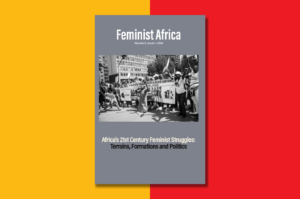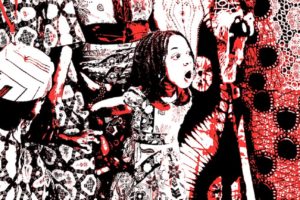
I
Earlier this year, in the context of an English-language debate on race consciousness in Africa, the topic of the Negritude movement came up briefly. The Zimbabwean-South African writer Panashe Chigumadzi wrote in her finely-argued essay, “Why I’m No Longer Talking to Nigerians About Race,” published in Africa Is a Country:
Wọlé Sóyinká had been so unimpressed and impatient with the Negritude movement spearheaded by the Francophone writers of African descent that he famously dismissed them at the 1962 African Writers Conference held at Makerere University, quipping: “A tiger does not proclaim his tigritude, he pounces.” At a conference in Berlin two years later, Sóyinká elaborated this: “a tiger does not stand in the forest and say: ‘I am a tiger.’ When you pass where the tiger has walked before you see the skeleton of the duiker, you know that some tigritude has been emanated there.”
It’s not that Sóyinká was the only one to critique the Negritude movement. It was just that he was the loudest, and perhaps the most flippant, in his response.
While it might not shed light on the question of race-consciousness in parts of Africa, a discussion of what Negritude was and how it garnered such a strident response from Soyinka, is valuable in its own right, especially for non-Francophone audiences interested in African literature.
II
The Negritude movement was born in Paris in the 1930s, as three students from different parts of France’s empire reacted against one idea, building their own framework on a three-part foundation. The students were Aimé Césaire of Martinique, Léon Damas of French Guyana, and Leopold Senghor of Senegal. All were poets, and more.
The three would meet in a salon owned by Paulette Nardal, a journalist born in Martinique and formerly the first black female student at the Sorbonne, who was excellent at bringing people together. They were reacting in part against the idea of francité, or Frenchness, an idea that permeated the French colonial project: that all history was part of a civilizational effort, informed and illuminated by the European enlightenment, the French authors who partook in it, and, above all, the Academie Française, whose members were the linguistic, literary, and cultural keepers of the faith.
To participate in this project, it was necessary to become a citizen, reach the highest level of (Paris-designed) education possible, and help in the building of a culturally unified and putatively race- and ethnicity-blind civilization. For colonized people, the demand to leave aside any acknowledgement of the values of your own society was a difficult one, and Césaire, Damas, and Senghor were key in constructing an aesthetic and intellectual response. The three had core inspirations.
René Maran, a French civil servant from Guyane who worked for years in Cameroon, had published Batouala, a novel that beautifully passes an African Bechdel Test: though it has some white characters, the story is fundamentally one of the day-to-day concerns of two Banda men, doing things whose interest derives from their characters and their milieu, rather than the gaze of the colonizer. In the end, a character who in the moment leans particularly heavy on ritualized knowledge meets a fate that awaits him with very French irony, but this doesn’t mask the quality of the narrative, or the seriousness with which Maran took his characters. In 1921, he’d won the Prix Goncourt for the book.
In 1928, Jean Price-Mars, already well on his way to being the dean of Haitian ethnography, and having already served in the Haitian senate, had published Ainsi Parla l’Oncle, clearly arguing that the things that up to that point were often denigrated by intellectuals as inferior parts of Haitian popular culture, including vaudou and folk tales, were the very things that illustrated its richness, worth, and diversity. In the following decade, Price-Mars would be in close contact with the three founders of the negritude movement.
Finally, the black American writers of the Harlem Renaissance, many of whom spent part of the 1930s and the years following in Paris, were a major touchstone with their intensely readable poetry and prose.
With these and other influences, Césaire, Damas, and Senghor founded the magazine L’Etudiant Noir. The latter two eventually became editors at Presence Africaine, establishing it as the premier publishing house for Africa and its diaspora, decades before Heinemann’s African Writer Series.
Their movement, dedicated to publishing books illustrating the relativist value of black stories and societies, grew in leaps and bounds, including poets, novelists, philosophers, historians, essayists, playwrights, and folklorists, and it was perhaps unique among literary movements born in Paris salons in that, for decades, it was not particularly fractious. The three founders, all willing to take the ideas of Batouala farther than its own author had been, were notably nonetheless also largely gradualists when it came to independence movements. But when a younger generation of writers came up, including Frantz Fanon, a former student of Césaire’s who advocated for and participated in armed revolt, there was room for them. Césaire was also a mentor to the philosopher, cultural critic, and novelist Edouard Glissant, who in the 1950s advocated for antillanité, a philosophy that argued that the Martinican experience was best captured by something even more local and particular than Negritude itself offered. René Depestre, a Haitian poet and friend of Césaire’s, had a decades-long relationship with him where they never stopped prodding and questioning each other.
Through all these, the books, from the histories to the novels to the poetry, were intensely readable, with characters that shone and plots that drove, as attested by their continued presence on Francophone school reading lists. We’re talking books with big ideas that are impossible to put down. There may often be a touch, as in Cheikh Hamidou Kane’s L’Adventure Ambiguë, of salon-inspired pensiveness, but these writers were far from disengaged. Guinea-Conakry gained its independence in 1958, several, including many from other parts of Africa, flocked to join the government there, eventually leaving to return to writing, or to join their own newly-independent countries’ governments and legislatures. Césaire and Damas, both from places that would never gain independence, served in the French Assembly, while Senghor became the first president of Senegal, helping establish it as a beacon of democracy and plurality, and Dakar, with its university renamed after the historian Cheikh Anta Diop, as an intellectual magnet for West Africa. Amadou Moktar Mbow and Amadou Hampâté Bâ helped build respect and support for African intellectual heritage into the United Nations Educational, Scientific and Cultural Organization (UNESCO).
It was in this context that Soyinka made his comment about tigritude.
III
On the one hand, it would seem to make no sense: if there was room for Richard Wright in Nardal’s salons, and for Fanon at Presence Africaine, there was certainly room for Soyinka in the Negritude movement. But his statement wasn’t really about protesting a lack of conceptual space. It was about announcing the young generation of African-born Anglophone writers as a leading force to be reckoned with, a force to be associated with independence and fierceness. It’s worth noting that his statement didn’t seem to have made much of a splash in 1962; it was only as his own significant literary talent became apparent as a result of his impressively growing body of work that his tigritude quote began to achieve a measure of fame.
If “tigritude” didn’t make an immediate splash, perhaps a more important outcome of that literary congress was the decision to treat as an open question whether literature by members of the diaspora was actually African literature. Insofar as it was an open question, it was also a new one, and one that would have been very difficult to broach in the framework of Negritude. Who would stand in front of Langston Hughes, Aimé Césaire, Zora Neale Hurston, and Frantz Fanon, and say: I’m sorry, but should you wish to be considered part of the world’s black literary establishment, please stand there on the stoop and keep knocking—see if you can’t come in? From the perspective of Negritude, these names were already in the house, for they’d helped build it. (Decades later, authors like Marlon James or Tiphanie Yanique would not, seen from a perspective of Negritude, need to wait to have crossed some bar before they became “African writers”—their status inheres in the very first promising sentences they put between two covers.)
But before Makerere, while individual writers were thinking about ways to shine a brighter light on the young generation of Anglophone writers chafing at the prospect of elder gatekeepers, Chinua Achebe provided an elegant solution. The opening pages of Things Fall Apart, while talking about a longstanding, rich, and engaging society, also give readers the sensation of being present at a literary Big Bang: these passages pause for no antecedents, and it is no exaggeration to say that almost every fiction book written thereafter in Anglophone Africa was published by Achebe through the African Writers Series or interpreted in part as a response to his monumental works. From a certain perspective, the aptness of an out-of-Achebe conceptual model of African literature ought not be gainsaid.
Contrast Ousmane Sembene’s intense yet sprawling Les Bouts de Bois de Dieux, published just two years after Things Fall Apart. From the opening scene in a barracks through innumerable other settings throughout the book, a reader feels hurled immediately into the middle of ongoing, grab-you-by-the throat conversations of proverbs, economics, history, and gender dynamics; you can hear the author of this novel talking with those of other novels. Almost anywhere you start in Negritude, you feel like you’re immersed in a vast ocean of such conversations flowing into and through one another, but with each still localized, particularized, and beautiful, and with the totality impossible for any one person to fully explore it all in a lifetime. If you start reading in French, soon enough you will be aware of a need to go over to English, and then perhaps Kreyol, Patwa, Wolof, Pulaar, Bambara, Hausa, and Arabic. Soon Lingala, Portuguese, Swahili, Dutch, and Xhosa, and so on.
Indeed, the project of the Conference of African Writers of English Expression at Makerere University was one of boundary-defining; in this, its effect has been far-reaching. In rejecting Negritude, it also rejected Negritude’s interest in folklore and ethnography. “Anthropology” became, and has largely remained, a pejorative term in Anglophone literary criticism, being associated not with black writers like Hurston, Price-Mars, and Hampâté Bâ, but rather with the colonializing project of Europeans (in the event, both facets were there).
Whereas Negritude had room for Birago Diop, who became one of Senegal’s most beloved writers for his collections of folktales, the Anglophone literary establishment was busy distancing itself from Amos Tutuola and his folklore-influenced works. While Negritude positioned itself in opposition to the linguistic purists of the Academie Française, Anglophone authors, not faced with a similar institution, categorized Pidgin Englishes and local languages as non-literary. Indeed, the theoretical and literary-critical later career of Ngugi wa Thiong’o, who’d attended the Makerere Conference as James Ngugi, can partly be seen as an attempt to bring back into the Anglo-African literary universe influences that it had ejected with its rejection of Negritude.
IV
Francophone literature, constantly integrating folklore and its logics, was able to move earlier and deeper into magical realism and fantastic realms than its Anglophone cousin, which, for more than a generation, remained comparatively focused on the Romantic author, rather than popular or demotic tradition, as the fount of literary meaning. Sony Labou Tansi’s hypnotic 1979 magical-realist-turned-techno-futurist debut novel La Vie et Demie can be seen as an early apotheosis of the Francophone trend. An Anglophone reader, or one familiar with the argument David Diop advanced in the lecture published with his poetry collection Coups de Pilon—that African writers have to constantly balance between seeming too African, too ethnic, and seeming too European—is in for a shock in the novel’s first pages, as Tansi seems to be playing with some very dangerous tropes. It soon becomes clear that Tansi isn’t interested in tropes at all, as he builds out a propulsive narrative space with a logic and ethics that is simultaneously fantastic and very Congolese. Sometimes an author succeeds so far as to end up in a place all his own, and Tansi’s novel has ended up being sui generis, and was never translated into English, though its denouement, in which a multigenerational story with country-level sweep is wrenched by scientifically engineered mosquitoes, wound up with an unexpected, beautiful echo forty years later in The Old Drift, Namwali Serpell’s mesmerizing debut.
Indeed, contemporary trends in Anglophone African literature are letting the demotic back in, whether through Pidgin Englishes, local languages, or the contemporary version of demotic influence: less folklore, and more genre—science fiction, fantasy, and alternate formats like comic books, including comic books building on folklore. Thus, a generational shift in African literature sees today’s Anglophone writers and readers aggressively questioning many of the points on which their predecessors had insisted. If Soyinka and the attendees of the Makerere Conference can be seen as having constructed a gorgeous walled garden in a portion of the territory Negritude once carved out, today’s writers and readers are tearing down many of those walls, and venturing further afield, without denying the value of what has been raised within the garden itself.
V
It would be easy to over-emphasize a distinction between the authorial focus of 1960s Anglophone writers and their contemporaries and forebearers in the Negritude movement. That movement’s leaders maintained a functional emphasis on ensuring that there would always be material space and support for writing to be produced and preserved. Some of this may have come from the salon atmosphere at the movement’s birth; some from the roles of Presence Africaine, the Cheikh Anta Diop University in Dakar, and the United Nations Educational, Scientific and Cultural Organisation (UNESCO). To a certain extent it was this establishmentarianism that led Es’kia Mphahlele to criticize Negritude, as Chigumadzi notes in her essay, as a bourgeois, evolué philosophy. This may be a bit unfair, given that historical evolués, while they may have ended up as members of a middle class, largely did so by shedding connections to local experience and embracing, among other things, the universals afforded by European forms of education and religion. Negritude, by contrast, informed by Price-Mars’ folklorism and the poetry of the Harlem Renaissance, saw the literary traditions of the middle class as being impoverished by higher abstractions and enriched when they were firmly rooted in particular times, places, experiences, and traditions.
Nonetheless, Negritude’s own openness to fostering new ideas and new logics can be seen as having engendered its own down fall. It contained sufficient multitudes that there was always something—like Senghor’s political gradualism—that an opponent could well argue against. The emphasis on local detail itself enabled successor philosophies to spring up. In 1980, Depestre wrote the essay, “Bonjour et Adieu à la Négritude.” Glissant and others built on the ideas in that work, moving beyond antillanité to a philosophy of creolité, emphasizing that the Caribbean experience was best understood not as universal, in the mode of francité, nor even as black, like Negritude, but as a mix of many different things. Depestre’s triumphant 1988 novel Hadriana Dans Tous Mes Rêves—about a French “Creole Fairy” who, on the eve of marrying into an elite Jacmelian family, died, was mourned during a play that had “brought together three centuries of human history,” and became a zombie—embodied the spirit of creolité and became his best-known work. While the Caribbean would still produce authors like the incomparable Maryse Conde, who is equally at home writing about Martinique and Mali, Negritude-as-such ceased to be a dominant movement.
Meanwhile, in the African academy, the lack of resources available to universities outside of Europe and North America played its own role in negritude’s decline. While the early social science work coming out of the movement was cutting-edge and challenging to existing discourses (which did their best at the time to ignore its lessons), the universities and institutes where many of these academics settled did not have the resources in the 1970s and ’80s to properly bring up a generation of protégés, and by the time the academic world at large was ready to engage with academic Negritude, many of the relevant works were in some ways decades out of date (Césaire and Fanon’s essays, needless to say, have met a different fate than the work of Negritude’s tenured social scientists).
VI
For all that, negritude’s success was precisely in establishing a multinational black discourse that was so solid that it spurred young revolutionary authors like Fanon, Glissant, Mphahlele, and Soyinka to press back against it in part or in whole while honing their own literary tools. Today, even as Negritude may appear to be nowhere, it is everywhere.
Negritude is in Panashe Chigumadzi’s awareness with and engagement of how her literature and philosophy draws on very particular South African histories dating back to 1652. It is in Eniola Soyemi’s spirited and closely-argued “Are Nigerians ‘Black’ Enough To Talk About Race,” a response to Chigumadzi that appeared in The Republic. Taking issue with a criticism of Olúmọ Rock that appeared in Chigumadzi’s article, Soyemi says the formation’s beauty, so influential to Soyinka and the most local members of his audience, lies not in its approach to some abstraction of what sublime geology should look like but in the role this place played in centuries of history, and the stories told about that role.
Negritude can be found in the precise transatlanticism of José Eduardo Agualusa’s A Rainha Ginga, in the carefully built textual and comicbook worlds of Nnedi Okorafor, and in Marlon James’ The Book of Night Women and Black Leopard, Red Wolf. It is woven warp and woof through Henry Louis Gates, Jr.’s compendious Annotated African-American Folktales.
You can feel Negritude in Marguerite Abouet’s carefully re-imagined 1978 exurbs of Aya de Yopougon, in the Haitian-American wunderkind Greg Anderson Elysee’s Is’nana the Were-Spider, and in the simultaneously homegrown and globally ambitious series created by Nigeria’s Vortex Comics and its alumni. It is in the addictively demotic genre fiction of Nigeria’s Cassava Republic Press (a publishing house named for the tuber of South American
and Caribbean origin that has become an inalienable African staple).
Negritude pervades the eighty-seven different language-versions of of Ngũgĩ’s “Ituĩka Rĩa Mũrũngarũ: Kana Kĩrĩa Gĩtũmaga Andũ Mathiĩ Marũngiĩ” in the first volume of Jalada Africa’s Translation issue, and it weighs on the sonorously groaning shelves of local-language books (both translations and originals) that grow month-on-month in bookstores from Dakar to Durban. It is in the spatially aware lyricism of Fatou Diome, and in the fiery imagination of Leonora Miano, both of whose works remain almost entire out of the reach of English audiences; indeed, it is in all literature that speaks rootedly to any part of Africa or its diaspora, whether or not it has yet had the translation-facilitated opportunity to reach the broadest audiences.
The movement founded by Césaire, Damas, and Senghor survived the criticisms of Fanon and Glissant in part by incorporating and being adapted by them, and now, even if it’s not possible to talk about Negritude as a school whose tenets are being actively managed by a core of adherents, its effects have never stopped rippling outward. Negritude is everywhere in African and diaspora literature and criticism; it is the water in their creeks and rivers and seas, and each creek, each bay and deep, has its own particular version of the flavor
ABOUT THE WRITER
 D. S. Battistoli is an American-born worker in the field of international development who studied literature at university. At various points in his career, he has been based in Burkina Faso, Haiti, Liberia, Mali, and Senegal. Since 2016, he has called Abenasitonu, Suriname home.
D. S. Battistoli is an American-born worker in the field of international development who studied literature at university. At various points in his career, he has been based in Burkina Faso, Haiti, Liberia, Mali, and Senegal. Since 2016, he has called Abenasitonu, Suriname home.









The 2019 Brittle Paper Awards: Announcing The 5 Shortlists November 22, 2019 14:44
[…] “Negritude Is Omnipresent in African Writing: On Its Birth, Rebellion, & Disappearance,” by D.S. Battistoli (USA), ESSAY […]